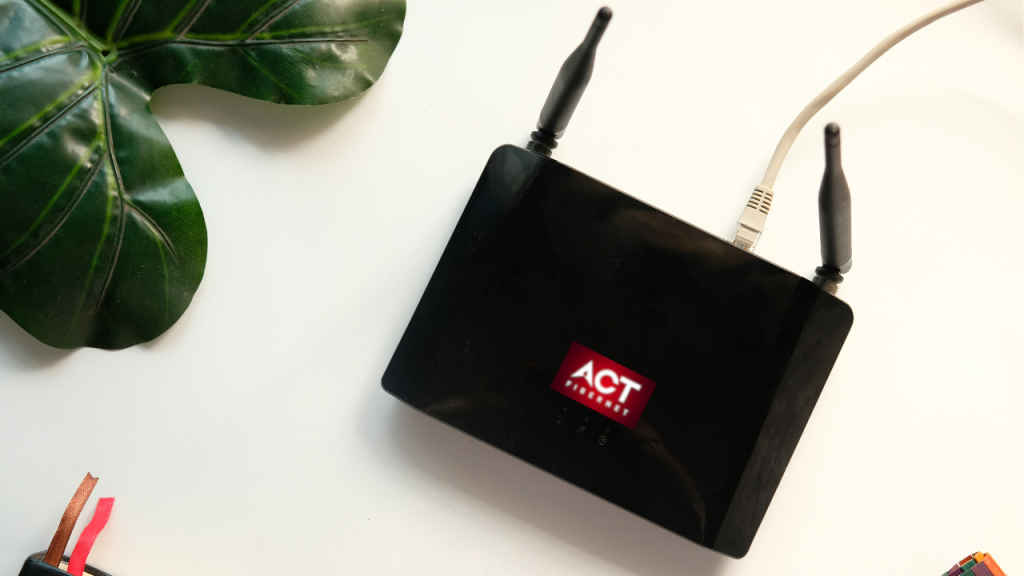

Whether at work or at home, if I had a rupee every time I heard or said – “the Wi-Fi’s acting up again” – I’d be a crorepati by now. A bane of modern day existence, ACT Fibernet is betting on AI to solve this digital menace once and for all, by making your Wi-Fi quietly fade into the background, working as it should, without you ever noticing it.
At the center of their effort is ACT Zippy, an AI-powered system that lives inside your home network or Wi-Fi router, constantly observing, learning, and tweaking your in-home network to ensure your Netflix doesn’t buffer, your Teams calls don’t freeze, and your smart devices don’t randomly drop off.
So how does it all work? And why does it matter now, when India’s digital homes are more congested than ever? “ACT Zippy continuously monitors parameters like signal strength, Wi-Fi channels, network congestion, latency, jitter, packet losses, and interference,” explains Ravi Karthik, Chief Marketing and Customer Experience Officer at ACT Fibernet. What that means is it’s watching everything that affects your Wi-Fi, all the time.


And when something’s not quite right – say, your neighbour’s router starts hogging the same frequency or your gaming console fights your smart TV for bandwidth – Zippy doesn’t call for backup. It acts. Silently. Instantly.
“It uses AI/ML models to analyze these parameters in real-time and generate a composite Wi-Fi score for each home,” Ravi adds. Think of it as a health check, continuously diagnosing your network and prescribing the right fix.
In order to be able to do that, ACT partnered with deep-tech startup Aprecomm.ai to create what they call a “smart, self-healing Wi-Fi experience.” Sounds like a marketing flourish? Not at all, says Ravi Karthik.
Also read: Busting the Myth: Why Higher Mbps Doesn’t Always Mean Faster Browsing
What’s clever about ACT Zippy is that it doesn’t try to do everything in the cloud. That would introduce delay, and in the land of real-time Wi-Fi corrections, latency is public enemy number one.
“Zippy employs a hybrid data processing approach,” says Ravi. Real-time issues – like choosing a better Wi-Fi channel or switching you to a 5 GHz band – are handled right there on your router. But more complex analysis, like long-term performance optimization or predicting future congestion patterns, is offloaded to the cloud.
In effect, your Wi-Fi has a local technician with backup support from a data scientist sitting in the cloud. Together, they learn from your habits – like when you usually stream 4K TV or when the kids start their online classes – and prepare the network accordingly.
Devices clinging to a slower 2.4 GHz band even when a faster 5 GHz option is available is one of the most annoying things about routers. But depending on network load, Zippy acts. “Zippy evaluates device capabilities, environmental conditions, and application type,” says Ravi. So, if your 4×4 MIMO laptop is binge-watching Stranger Things, Zippy knows to push it to 5 GHz. Meanwhile, your smart doorbell sticks to 2.4 GHz, where it’s happy chirping once in a while.
One of the hallmarks of well-trained AI is how it improves over time. ACT Zippy does exactly that. By learning your household’s behaviour – who logs in when, which apps hog the pipe, what time of day your Wi-Fi gets congested – it fine-tunes its decisions to deliver smoother experiences. Importantly, it doesn’t just react but starts to predict based on past patterns of behaviour.
Also read: Tips for maximizing 5G speeds on smartphones
“ACT Zippy employs AI-driven predictive adjustments rather than purely reactive changes,” Ravi explains. “The system carefully times channel switching and other optimizations to avoid unnecessary latency or packet loss.”
Let’s talk about the elephant in the room – how much does ACT Zippy know about you, while doing what it does? Ravi is quick to clarify. “Zippy does not have access to any personal user data. Only de-personalized metadata and system telemetry are transmitted to the cloud.” Everything else stays local and encrypted.
In other words, the system isn’t reading your emails or browsing history – it’s simply watching the plumbing, making sure the pipes don’t clog.
So far, ACT Zippy seems to be doing its job without any issues. In the first 15 days after launch across 250,000 homes, ACT reported an average 3X speed boost across devices. Smart TVs saw 2X speed improvement, laptops got 3X faster, and smartphones leapt by 4X, according to Ravi Karthik.
Perhaps more importantly, ACT says “the AI-powered optimization steered over 80% of Smart TVs, 70% of laptops, and 60% of mobile devices to optimal Wi-Fi channels.” And in an increasingly smart home – where light bulbs, vacuum cleaners, fridges, and doorbells are all online – this kind of intelligent orchestration is essential. That it’s being done at the network level is pure magic.
In a market dominated by telecom giants like Reliance Jio and Airtel, ACT’s differentiation is critical. Unlike the telcos, ACT’s game is pure broadband – and it’s betting that experience matters more than other frills. By focusing on the one thing people want from Wi-Fi – reliability – ACT is trying to win hearts, not just speed tests, suggests Ravi Karthik.
“We believe AI and machine learning are central to delivering the best in-home experience,” Ravi emphasizes. The company has plans to evolve Zippy further over the next 12–18 months, including “more advanced predictive analytics, deeper congestion management, and improved support for mesh networking.”
The Wi-Fi router, once a dumb box in the corner of the room, has become the lifeline of modern life. And yet, we expect it to just work – without asking too many questions. What ACT is doing with Zippy is trying to make that expectation a reality. The best technology, after all, is the kind that fades into the background. And if ACT Zippy keeps doing its job right, you might never need to say “the Wi-Fi’s acting up again” ever again.
Also read: How to limit Internet and Wi-Fi Hotspot speeds on Android smartphones